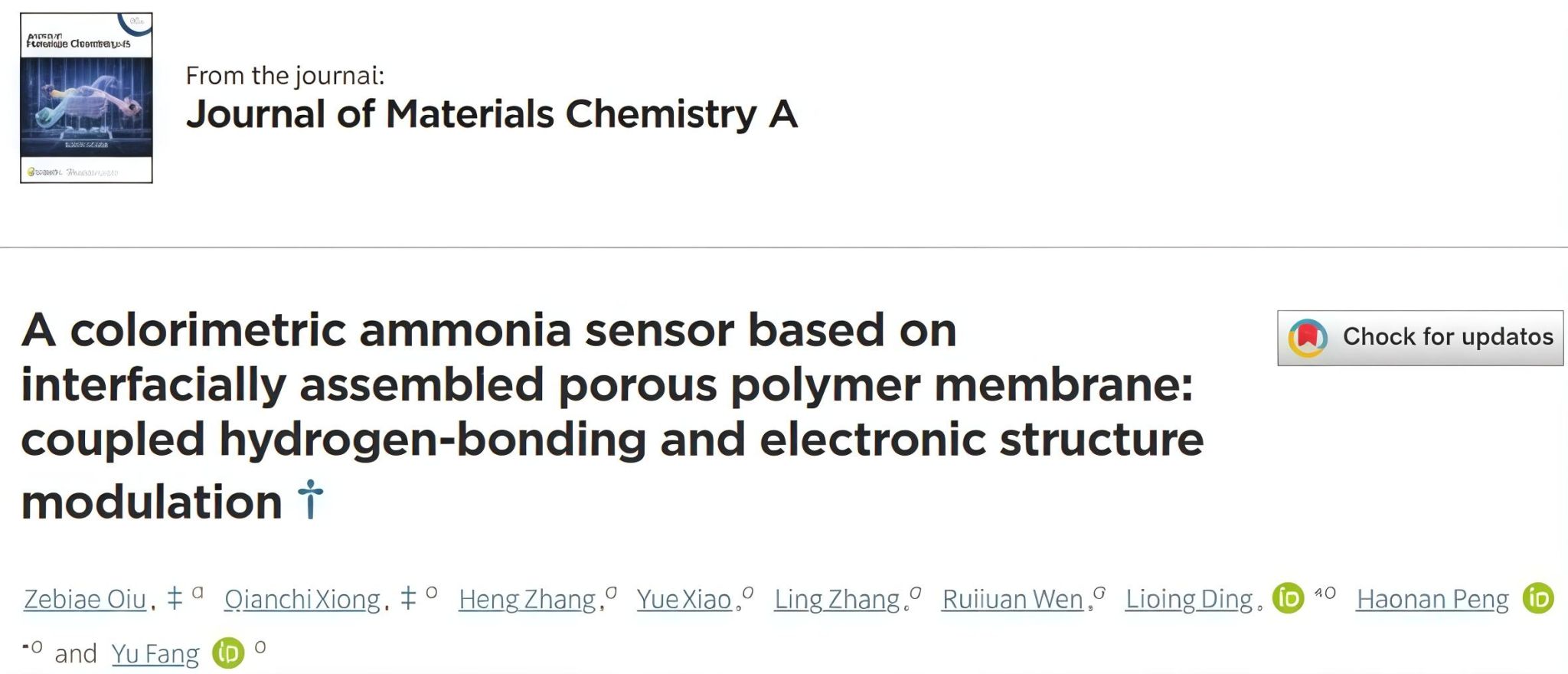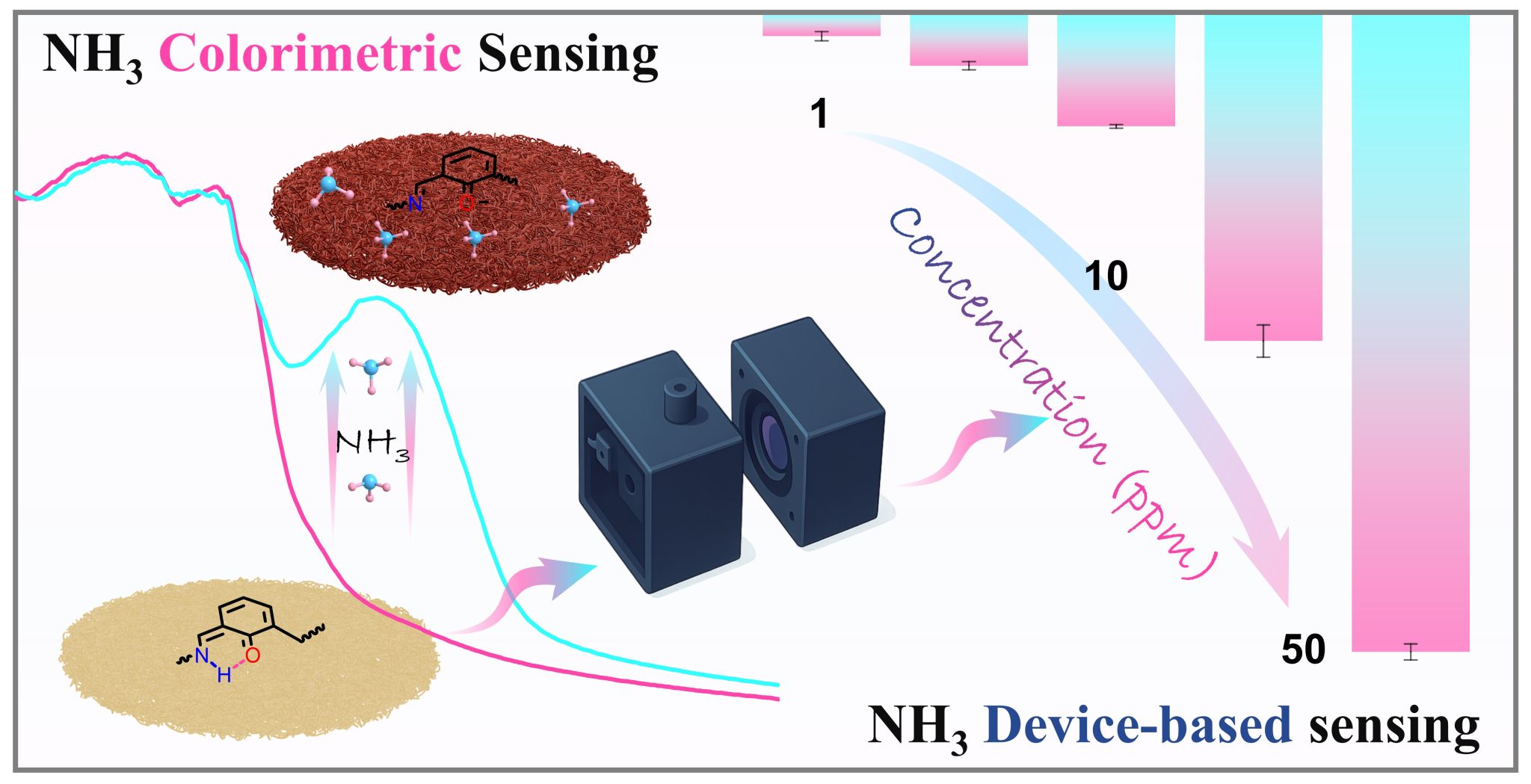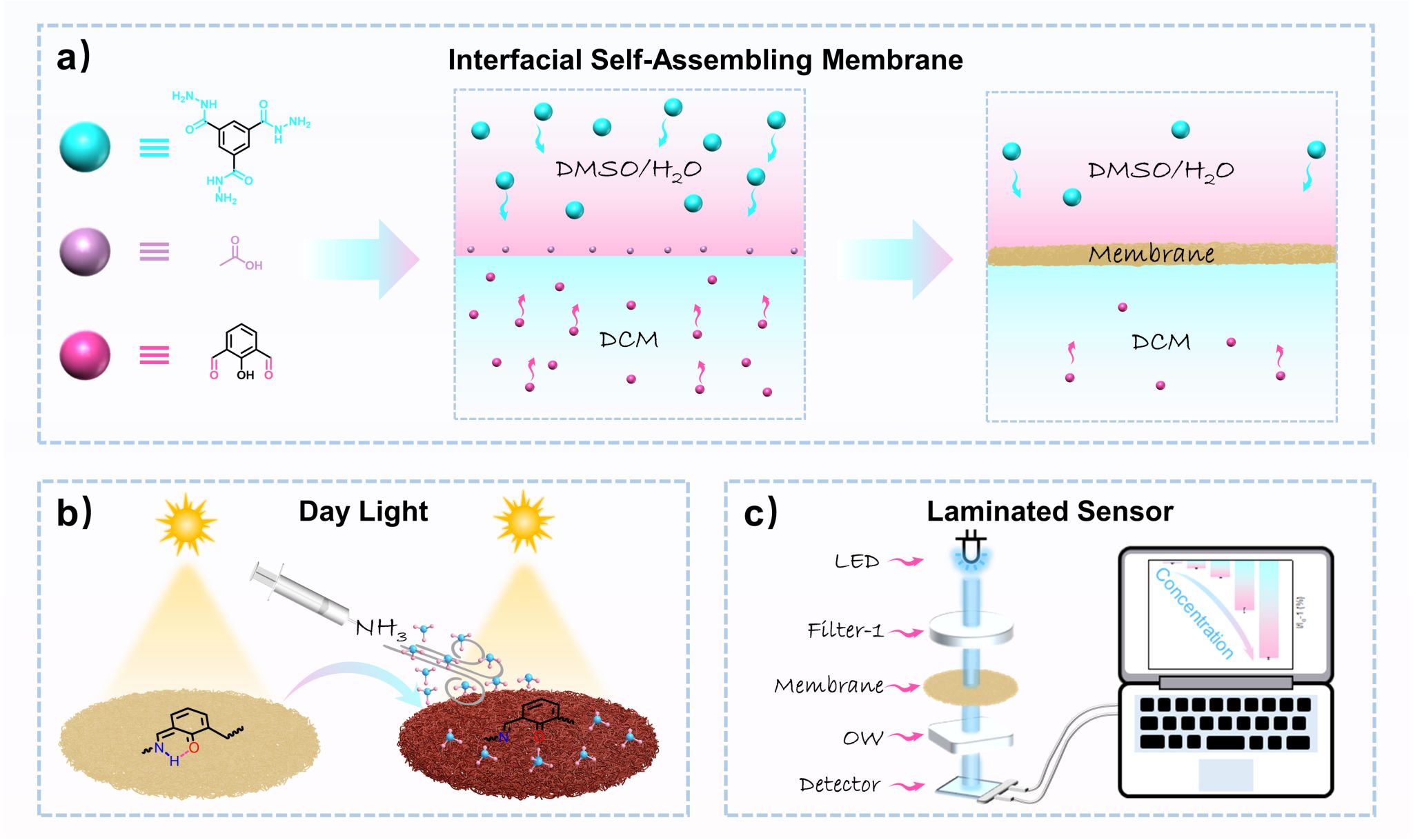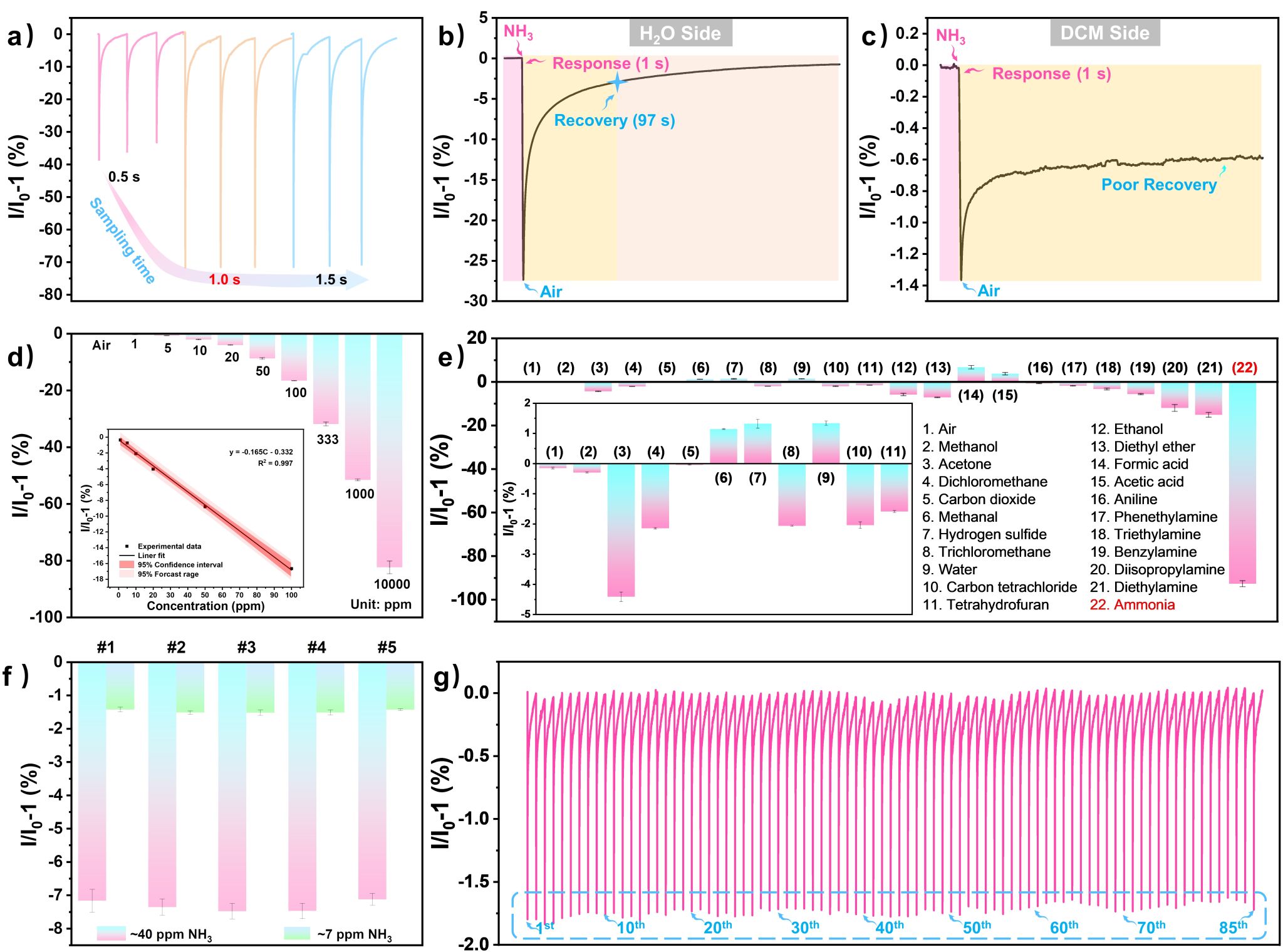
Zebiao Qiu, ‡ Qianchi Xiong, ‡ Heng Zhang, Yue Xiao, Ling Zhang, Ruijuan Wen, Liping Ding*, Haonan Peng* and Yu Fang. J. Mater. Chem. A, 2025,13, 23602-23612. DOI: 10.1039/d5ta03808a

Ammonia (NH3), a highly toxic, corrosive, and volatile industrial gas, is extensively employed in semiconductor manufacturing, fertilizer synthesis, and cooling systems. However, accidental leakage can disrupt lithography processes, accelerate equipment corrosion, contribute to air pollution, and pose serious health risks to personnel. Consequently, the development of sensing materials and technologies that feature low energy consumption, rapid response, high selectivity, and facile integration is of great importance for industrial safety monitoring, cleanroom environmental control, and pollution detection.
Conventional NH3 sensing platforms, including metal oxide sensors, electrochemical sensors, and fluorescent probes, still suffer from critical limitations such as sluggish response, excessive energy consumption, or complex signal interpretation. These challenges highlight the urgent need for breakthroughs enabled by advanced material systems. In this context, porous organic polymers (POPs) have recently emerged as highly promising candidates. Benefiting from their structural tunability, exceptional chemical stability, large specific surface area, and abundant functional sites, POPs have demonstrated significant potential in gas capture, separation, energy storage, and chemical sensing, offering new opportunities for next-generation ammonia detection technologies.

Figure 1. (a) Schematic illustration of the fabrication process of nanofilms via a liquid–liquid interfacial confined dynamic condensation strategy. (b) schematic representation of the colorimetric sensing mechanism. (c) schematic diagram of the multilayer film-based sensor.
In this study, a structurally asymmetric porous organic polymer film (BTH–DFP) was fabricated via a domain-confined dynamic condensation reaction at a liquid–liquid interface. The film was constructed from 2-hydroxyisophthalaldehyde (DFP) and 1,3,5-benzenetricarbohydrazide (BTH), which underwent acylhydrazone linkage formation at the aqueous–organic phase boundary. The resulting film exhibited excellent self-supporting characteristics and structural integrity. Notably, the side of the film adjacent to the aqueous phase displayed a fibrous porous morphology that enhanced mass transfer efficiency. Structural characterization revealed that the polymer network is rich in intramolecular hydrogen bonds formed between hydroxyl and hydrazone moieties. Upon exposure to NH3 vapor, these hydrogen bonds are disrupted, inducing a pronounced redshift in visible light absorption and causing a rapid color transition from pale yellow to orange-red at room temperature. Furthermore, a stacked sensor architecture based on this film enables highly selective, highly sensitive (limit of detection down to 0.1 ppm), and rapidly reversible detection of NH3 vapor under fluorescent lighting, demonstrating its strong potential for practical deployment in portable colorimetric sensing systems.

Figure 2. Sensing performance analysis of the laminated sensor platform.
First Authors: Qiu Zebiao, Xiong Qianchi, master’s students, Shaanxi Normal University
Correspondence Authors: Prof. Peng Haonan, Prof. Ding Liping, Shaanxi Normal University
Full Text Links: https://pubs.rsc.org/en/content/articlelanding/2025/ta/d5ta03808a
 Latest Updates
Latest Updates






